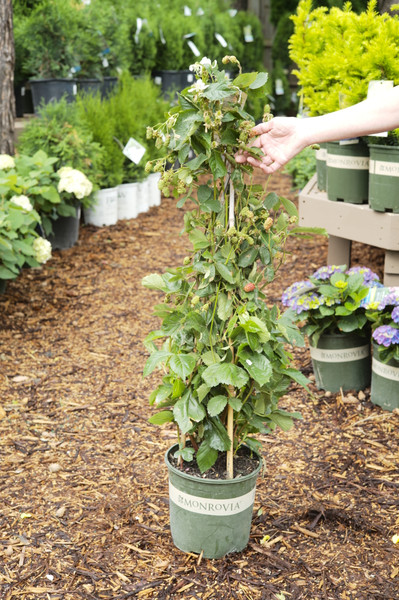Blackberries & Raspberries
Posted by Jessie Jacobson on Jun 3rd 2024
Blackberries & Raspberries
Growing healthy, fresh fruit in gardens has been on trend for centuries. Recently this trend has taken off as many homeowners are choosing to add edible plants to their landscape. One of the easiest fruits to begin with are raspberries and blackberries which bring edible enjoyment with their plump delicious red, yellow, and black berries. Rubus spp. is a member of the Rosaceae family and is native to both North America, Asia, and Europe.
Raspberries and blackberries produce best when planted in full sun, 6+ hours of sun per day, preferably in the afternoon. Always plant in well-drained soil with added compost. We like Purple Cow's Activated Compost. Planting in an open area with adequate air circulation will help reduce disease problems. Common diseases to watch out for include anthracnose, cane blight, powdery mildew, and phytophthora root rot. Ways to minimize disease include watering at the base of the plant to keep leaves dry. Do your best to water in the morning so plants have a chance to dry before the sun sets. Potential insect pests include aphids, sawflies, and Japanese beetles. Raspberries and Blackberries are hungry. If you feed them, they will feed you! Apply a slow-release, organic fertilizer such as Espoma’s Organic Berry-Tone in early spring and late spring (45-60 days apart). A thick layer of organic compost or mulch can be used for moisture retention and weed reduction.
Raspberries and blackberries vigorously grow from canes starting in early spring. Plants produce suckers that can be cut away and used to start new plants. Leaves can be used as tea to help with digestive and inflammatory problems. Bloom time is late May to early June with small, white, or pink 5-petaled flowers that produce large amounts of nectar, a favorite of bees and other pollinators. The more bees, the tastier the berries are at harvest. Berries are an aggregate fruit made up of clusters of fruits called “drupelets” each with its own seed. The average berry has over 100 seeds or fruits. Raspberries have a hollow core, while blackberries do not. Once the fruit production starts, it is best to pick the ripe berries every 2 to 3 days to keep the patch healthy and free of unwanted bugs.
Some of Tonkadale’s favorite Rubus varieties include Blackberry ‘Baby Cakes’ and ‘Superlicious’ as well as Raspberry ‘Heritage’, ‘Fall Gold’, ‘Indian Summer’, and ‘Raspberry Shortcake’.
Happy Planting!

